She was the last Queen of France before the revolutionaries overthrew the monarchy and a key figure in the French Revolution.
After a life of extreme extravagance at the Palace of Versailles, she was publicly executed by guillotine on the Place de la Concorde in Paris.
Below is the ultimate list of interesting facts about Marie Antoinette.
We had a beautiful dream, and that was all.
Marie Antoinette
1. What was Marie Antoinette’s real name?
Marie Antoinette sounds French right? Well, that would certainly be fitting for a French Queen. The truth, however, is that Marie Antoinette wasn’t French at all.
Her real name was Maria Antonia Josepha Johanna and she was actually born in Austria as the youngest daughter of Empress Maria Theresa and Francis I, Holy Roman Emperor.
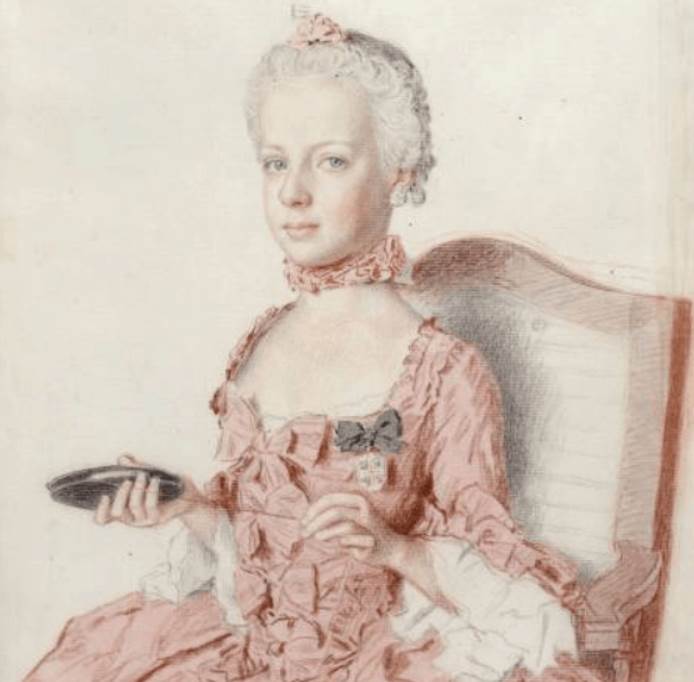
2. When was Marie Antoinette born?
Marie Antoinette was born on November 2, 1755. This means she was born on All Souls Day, a day to remember the dead. For this reason, her birthday was always celebrated the evening before on All Saints Day.
She was born into one of the most powerful families at the time as the daughter of the ruler of the Habsburg Empire and the Holy Roman Emperor.
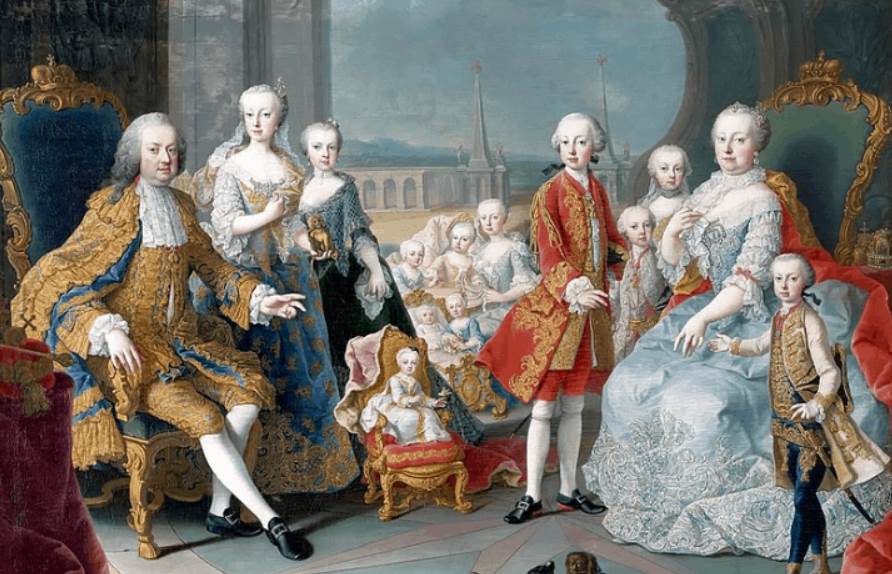
3. Where was Marie Antoinette born?
She was born at the Hofburg Palace in Vienna, the imperial winter residence of the Habsburg Empire at the time. The name of the palace literally translates to “Castle of the Court.”
The Hofburg Palace has served as the official seat of government since 1279 and is currently used by the Federal President of Austria.
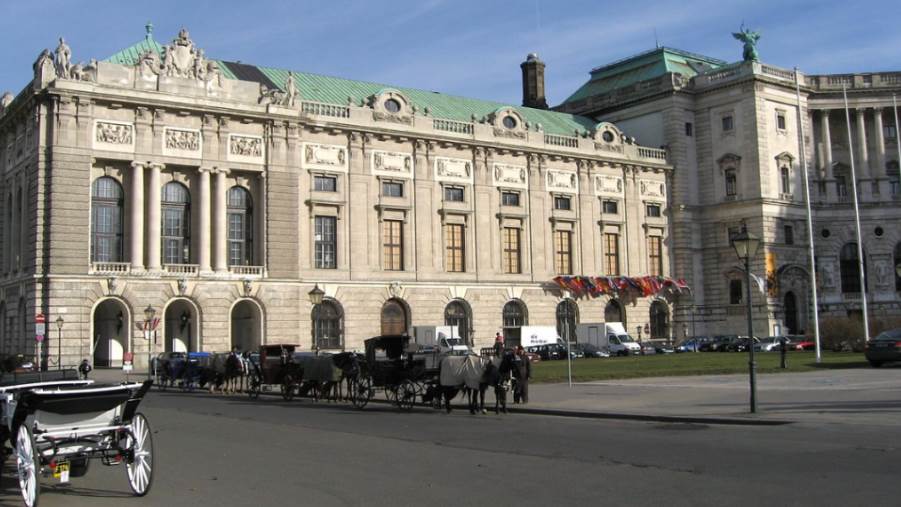
4. She had a normal upbringing
As a member of the Royal family, being an archduchess, she was enjoying a relatively normal upbringing. She spent most of her time in either the Hofburg Palace (in the winter) or the Schönbrunn Palace (during the summer).
Her education was normal as well as she learned to sing, dance, and perform in front of her parents with her siblings in the palaces. She was especially close to her sister Maria Carolina with whom she shared a lifelong bond.
It’s this relatively normal upbringing and family life that would play a significant role in her future life as the Queen of France.
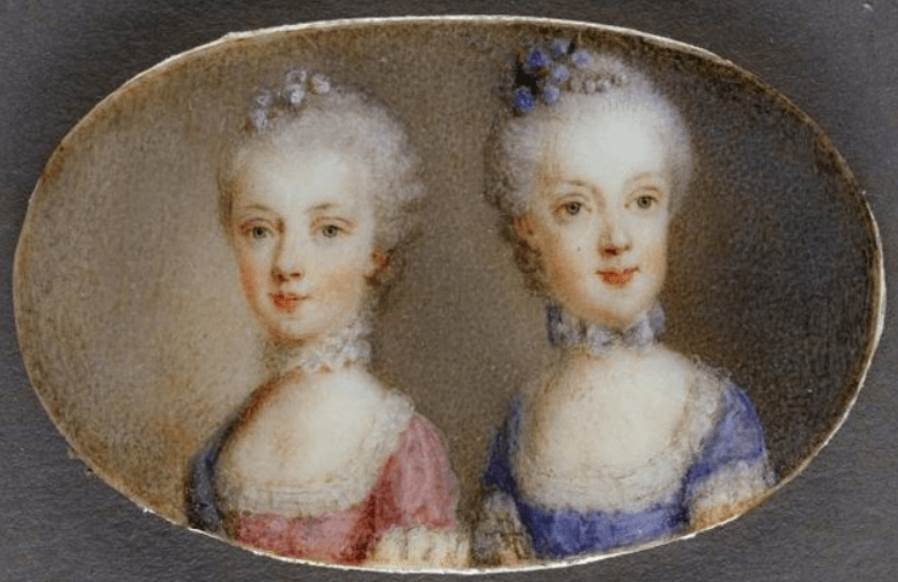
5. She met Mozart as a child
The young Wolfgang Amadeus Mozart started a tour as a child prodigy back in 1762. Mozart was the same age then and just 2 months younger than her.
He visited the imperial court in Vienna and met Marie Antoinette when she was just 7 years old. This happened on October 13, 1762, right at the start of his European tour that took him to the courts of London, Paris, Munich, Amsterdam, and many more.
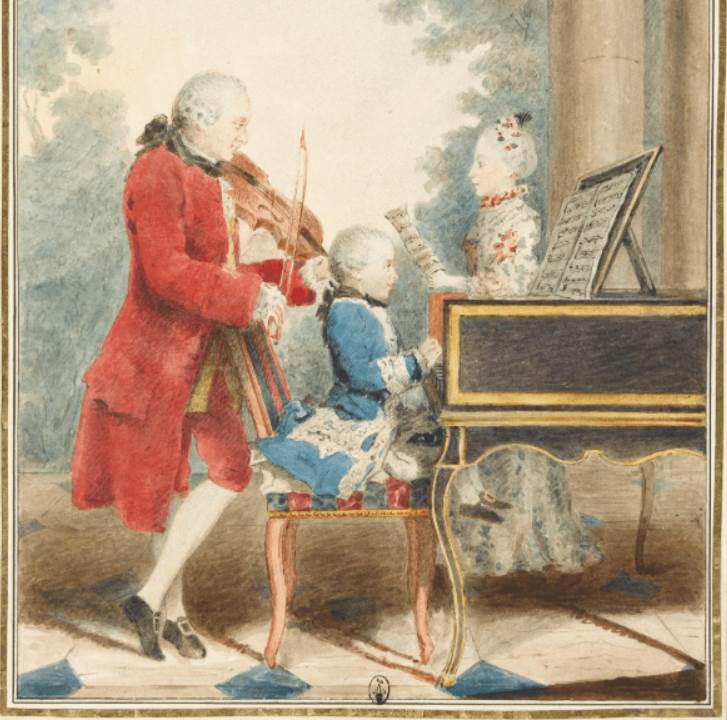
6. Music was her talent
The meeting with the child superstar Mozart must have struck a chord with Marie Antoinette as she was fascinated by music during her childhood years.
She wasn’t much of a student and had a hard time learning new things. She wasn’t even able to correctly write in any language and converse well by the age of 10. She did, however, learn to play the harp, harpsichord, and flute and had an excellent singing voice.
Her teacher was the famous opera composer Christoph Willibald Gluck who she invited to Paris in 1774 after becoming queen of France.
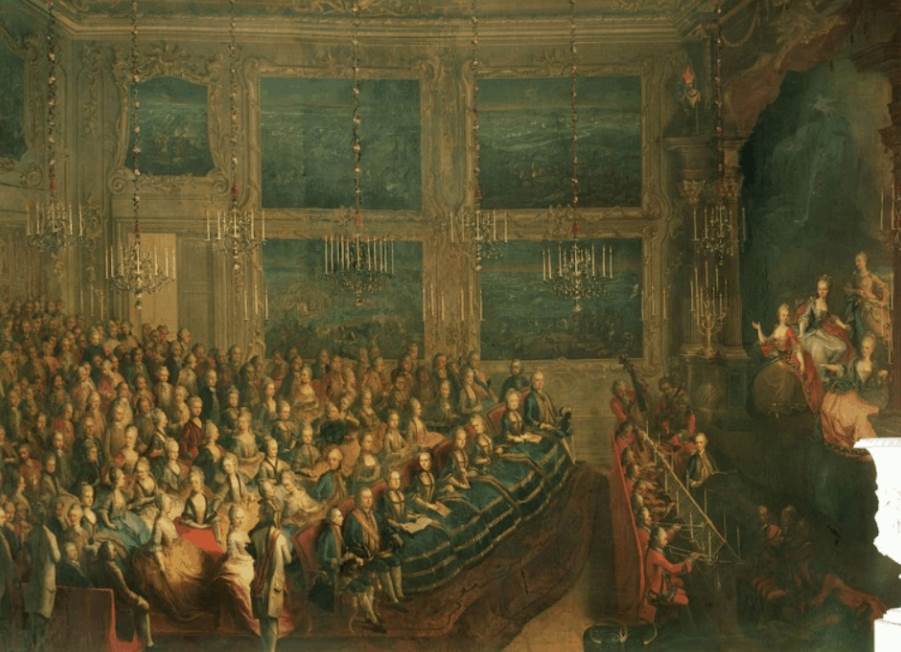
7. The diplomatic revolution sealed her fate
In the 1750s and 1760s, the Seven Years’ War wreaked havoc in the political landscape of Europe. This is emphasized by the reversal of longstanding political alliances in Europe.
Significant for Marie Antoinette was that Austria became an ally of France instead of Great Britain and both countries promised to help each other through the “Treaty Of Versailles.”
These events would become very significant as she was used as a means to strengthen the bond between the two countries through a marriage with her future husband, Louis XVI.
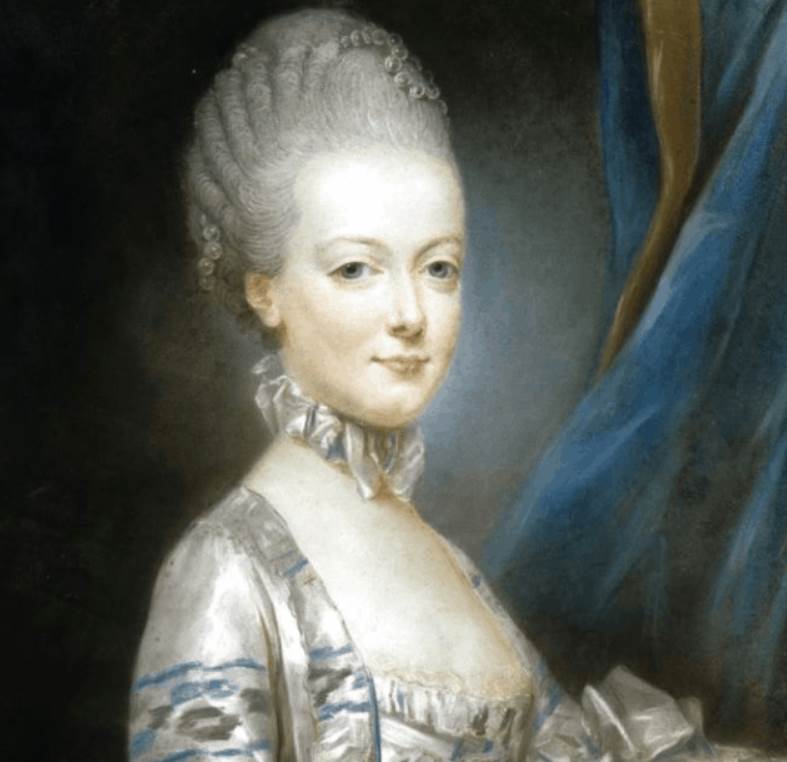
8. She got married at the age of 14
Apart from the Treaty of Versailles, empress Maria Theresa of Austria, the mother of Marie Antoinette, wanted to symbolically seal the peace. And what better way to do so than to have your prettiest daughter marry the heir to the throne of the country you want to befriend?
That’s exactly what happened and the proxy marriage of the two teenagers, Louis-Auguste (the future Louis XVI), Duke of Berry and Dauphin of France, and Marie Antoinette, took place on April 19, 1770.
Some interesting facts about Marie Antoinette and her marriage: She was just 14 when she got married and her husband was just 15 and they never met before the marriage and would only meet several weeks later.
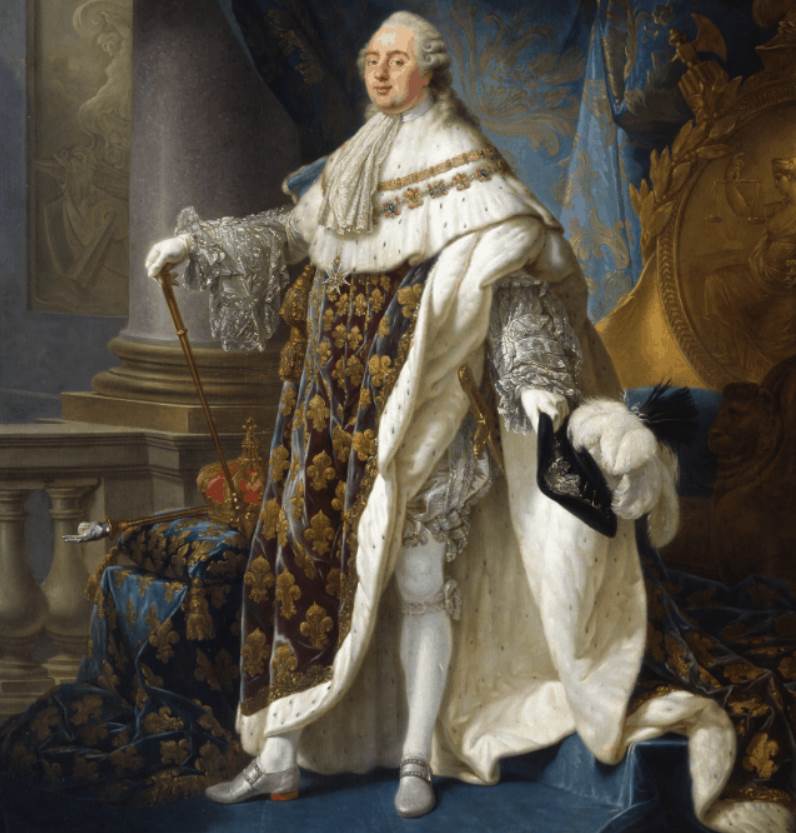
9. The first meeting was in the woods
Being married by proxy means that one or even both of the individuals getting married aren’t physically present during the ceremony. For this, Marie Antoinette’s brother, Archduke Ferdinand became the replacement of the Dauphin of France Louis-Auguste.
Even though the proxy wedding took place on April 19, 1770, it wasn’t until May 14 of that year that Marie Antoinette was delivered to the French on an island in the middle of the Rhine River and the first meeting took place on the edge of the forest of Compiègne.
10. A huge celebration followed
Maria Antonia arrived in France and instantly took on her French name, Marie Antoinette. After all, she was now the Dauphine of France.
On May 16, 1770, a ceremonial wedding took place at the Palace of Versailles in the Royal Chapel and a day of lavish festivities followed which set the tone for the extravagance that would now define the life of Marie Antoinette.
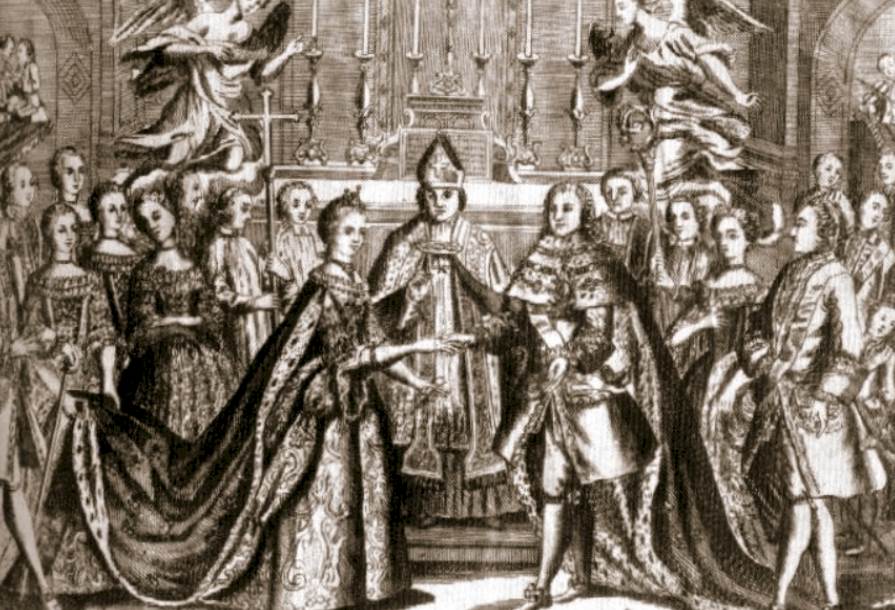
11. Louis XVI didn’t really want to get married
At the time of their marriage, both the newlyweds were inexperienced teenagers. Louis was a 15-year old boy who didn’t know a thing about women and was naturally shy.
Apart from onlookers seeing his hands tremble as he put the ring on his new bride’s hand, the day of festivities ended with the ritual bedding. King Louis XV walked the husband and wife to their room with the courtiers following closely behind.
Louis-Auguste didn’t really know what to do and Marie Antoinette didn’t get the prince charming she had been dreaming of. It’s needless to say that the marriage wasn’t consumed on the first night.
12. It took 7 years before the marriage got consumed
So the boy’s grandfather walked the teenage couple to their bedroom, gave them both a kiss and nothing happened afterward. That’s not that weird right? What’s strange is the fact that it took nearly 7 years before the marriage was actually consumed!
Rumors were spread that Louis XVI was impotent and surgery solved the issue. A more specific account mentions that Marie Antoinette’s mother, Maria Theresa, sent her son, Emperor Joseph II, to Versailles to solve the issue.
Whatever really happened, it worked. The couple had the first of its 4 children less than a year later.
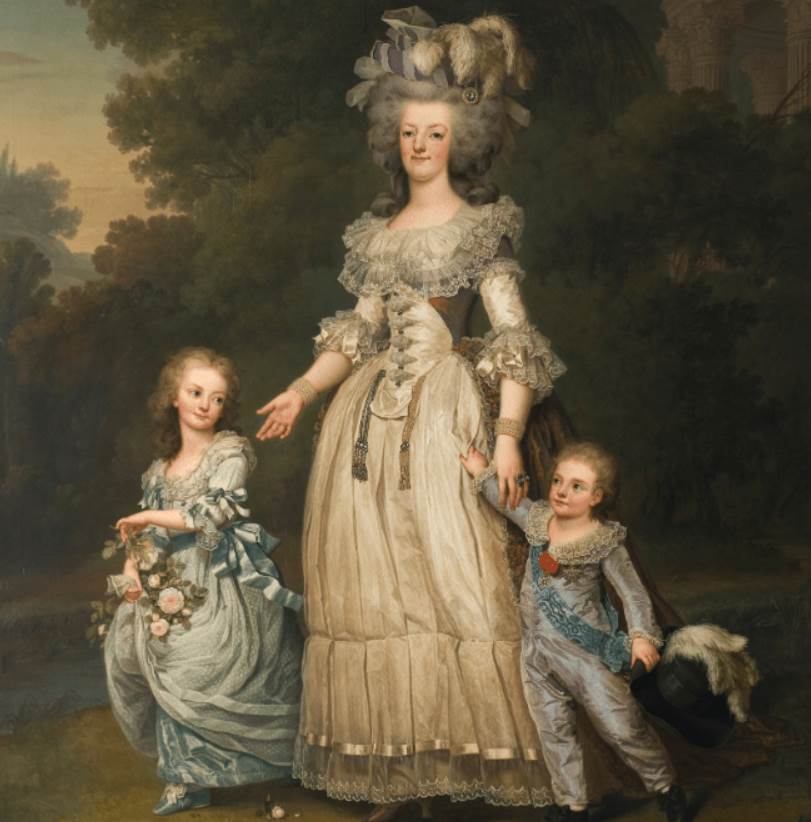
13. She had a grandiose entrance
Marie Antoinette was a beautiful teenager and had captivated the French people long before she even arrived in France.
This anticipation of the first appearance grew so much that over 50,000 Parisians crowded the streets of the city to get a glimpse of the new Dauphine on June 8, 1773. During this event, 30 people got trampled to death in hysteria.
14. The general opinion was mixed
Despite the grandiose entrance in the streets of Paris and the thousands of admirers who loved their new Dauphine, not everybody was too happy about the event and marriage.
The main reason was that not everybody agreed to the French-Austrian alliance. This would prove to be a huge obstacle for Marie-Antoinette which she never really overcame.
On the other hand, most common people liked her for her amazing grace, beauty, and personability.
15. She got caught up in extravagance
She was told by her mother, who clearly tried to paint an amazing picture to suit her political goals, that the Palace Versailles was a fairy tale castle. On the contrary of the Prince charming story of Louis-Auguste which was the complete opposite of reality, it was 100% true.
Marie Antoinette quickly found herself, as opposed to her husband, indulging in all the extravagance the palace life had to offer. She visited lavish balls, found joy in gambling, and spent whatever she could on extreme luxury.
It was a true fairytale for the young Dauphine who was completely sheltered from life outside the palace walls. This kind of golden cage lifestyle was bound to go wrong at some point.
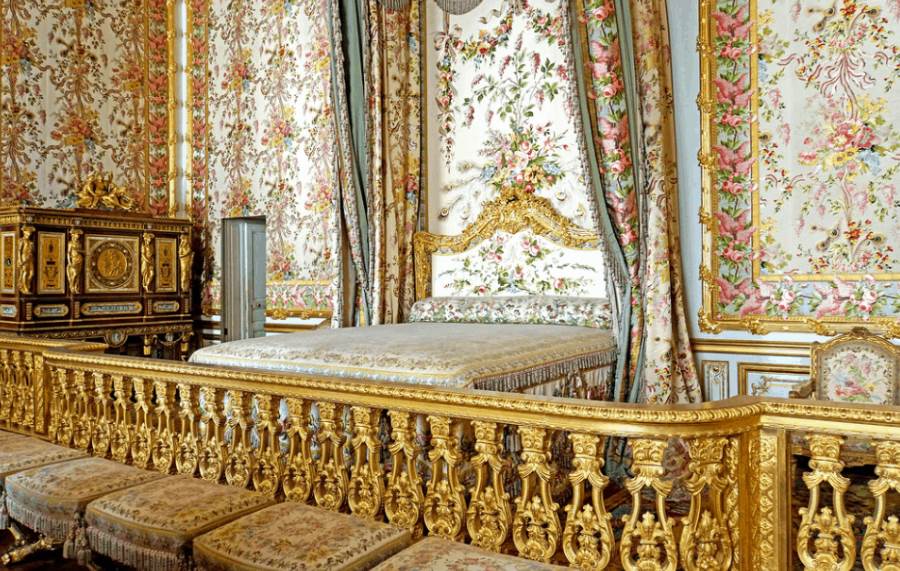
16. The paternity of her first child contested
It was a fact that Marie Antoinette had rather close relationships with some of her male admirers. This started as early as 1774 and didn’t go unnoticed.
It went so far that in the political pamphlet the “Libelles,” the paternity of their first child, Marie-Thérèse Charlotte, was questioned. Was the man who wasn’t able to consummate the marriage for over 7 years really the father?
Nevertheless, Marie Antoinette’s first daughter who would be known as “Madame Royale” was born on December 19, 1778.
17. She was a teenage Queen of France
King Louis XV contracted smallpox in 1774 and died shortly after. This means that his heir, Louis-Auguste, would rise to the throne and Marie Antoinette would become Queen of France.
This also happened on May 10, 1774, when Louis-Auguste became King Louis XVI of France and Navarre and Marie Antoinette became his Queen. She was only 18 years old at the time.

18. Things went downhill rather fast
Even though she didn’t have much political influence in her first years as the Queen of France, people started to blame her for the difficult financial situation the country found itself in.
While Marie Antoinette was spending heavily on fashion and luxury, people were starving in the streets. As early as 1775 she was blamed for the rising prices of flour, which subsequently increased the price of bread.
As a result of her seemingly extravagant behavior, the “Flour War,” a series of riots in April and May of 1775 that were caused by the rising prices of flour, was blamed on her. Many historians believe this was a prelude to the French Revolution.
19. Marie Antoinette continued to spend heavily
Marie Antoinette was given the “Petit Trianon,” a small estate inside the compound of the Versailles garden, by her husband on May 24, 1774, less than 2 weeks after she became Queen of France.
She had the luxury to use whatever money was needed for renovations to her taste. Rumors were being spread that she started decorating the walls with gold and diamonds using the treasury.
Many years later in 1783, she built a small farm called “Le Hameau de la Reine.” While people living on farms were starving, the queen played a peasant in her expensive fake farm. This didn’t go over too well with the common people, causing yet another uproar.
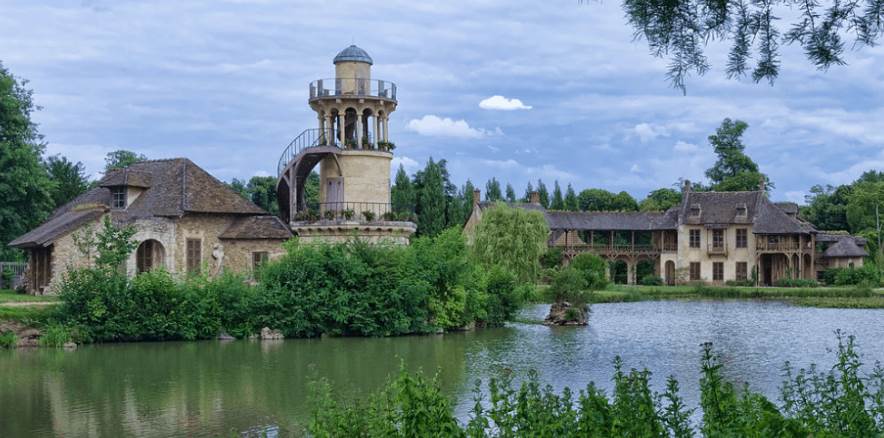
20. The Diamond Necklace Affair
During the 1780s, France had poor grain harvests which perpetuated the financial crisis and severely increased the debt. All the while, rumors kept circulating that the court was spending heavily on luxury, and especially Marie Antoinette was being targeted.
The final blow to the trust in the monarchy was the affaire of the diamond necklace, which revolved around Marie Antoinette trying to defraud the state treasury to acquire a diamond necklace worth 2 million livres (about USD 15 million today).
Even though Marie Antoinette was proven innocent, the affair meant the beginning of the end as trust in the Bourbon monarchy was completely lost by that time, and the revolution was only one spark away.
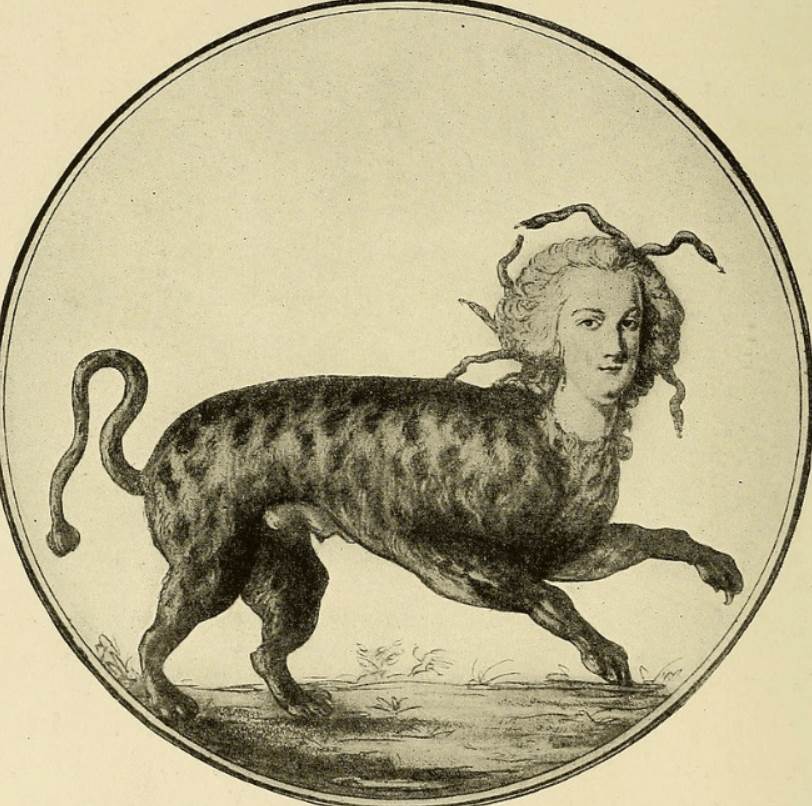
22. Marie Antoinette was unable to make reforms
Because King Louis XVI was suffering from severe depression during the enormous financial crisis, h was unable to perform his duty in politics.
Marie Antoinette became much more involved in the daily political affairs which mainly centered around financial reforms, and even participated in the King’s Council, the first Queen to do so in over 175 years after Marie de’ Medici.
Nevertheless, her efforts were in vain. She was given the nickname “Madame Deficit” in the summer of 1787 and things spiraled out of control on June 20, 1789, sparking the French Revolution that started with the storming of the Bastille on July 14, 1789.
The French revolution is one of the most significant events in modern history, and Marie Antoinette was a crucial factor in it.
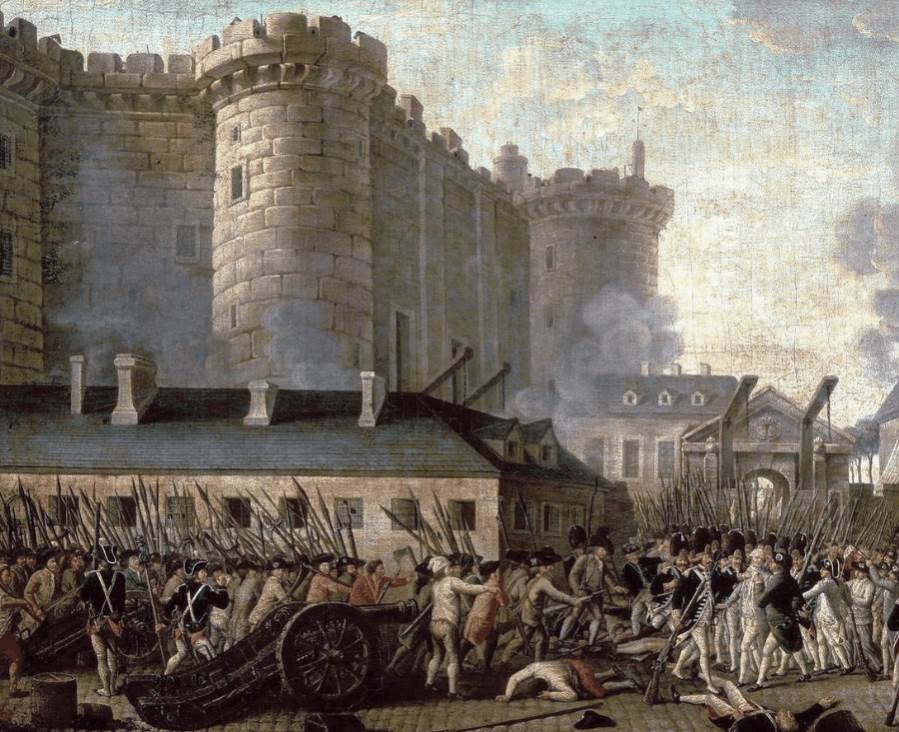
23. A Royal family under house arrest
Many of the Royal family members understood the precarious situation they found themselves in. Others didn’t seem to quite grasp it and life at the court resumed as normal.
This happened until October 5, 1789, when a crowd of female Parisians marched on Versailles and forced the Royal family to come to move to the Tuileries Palace in Paris where they were placed under “house arrest.”
This event is one of the most significant events early on in the French Revolution and is referred to as “The women’s march on Versailles” or “The October march.”
24. There was still hope early on
Remarkably, after everything that happened, the storming of the Bastille, the “imprisonment” of the Royal family in the Tuilerie Palace, and so on, there was still hope.
Marie Antoinette was able to befriend and bribe a moderate leader of the revolution named Honoré Gabriel Riqueti, Comte de Mirabeau. She was able to convince him of reconciling the monarchy with the revolution.
There were even cheers for the King and Queen on July 14, the remembrance of the storming of the Bastille (and still the national holiday of France up to today).
This flicker of hope all ended in April 1791 when Mirabeau died and Marie Antoinette wasn’t able to find another alliance in the revolution’s leadership.

25. The Royal Family tried a daring escape
With all hope seemingly gone after Mirabeau’s death, the Royal Family saw only one way out and that was to escape Paris.
King Louis XVI wasn’t a daring man and reluctantly agreed to one of many plans that were proposed during their captivity. Better yet, if their escape would have been successful they would have launched a counter-revolution as well.
It didn’t work out. They were recaptured in the small town of Varennes in eastern France, giving the attempt the name, “The Flight to Varennes” (June 20-21 1791). They were instantly brought back to Paris.
The escape attempt was a stab in the back to the revolutionary leaders and just about all other people that supported the revolution, and was the final blow to the monarchy.

26. Marie Antoinette’s husband was executed
The revolution gained strength and ultimately led to the abolishment of the monarchy on August 10, 1792, and was made official on September 21, 1792. The Royal family was stripped from their titles and referred to as the family “Cadet.”
They were also transferred to the much harsher tower of the Temple in the Marais after the storming of the Tuileries Palace on August 10.
With the abolishment of the monarchy, King Louis XVI was able to be tried as a regular citizen for undermining the First French Republic and was eventually sentenced to death. “Louis Capet” was executed by guillotine on January 21, 1793.
27. Marie Antoinette was separated from her son
On July 3, 1793, Marie Antoinette was separated from her son Louis-Charles, whom she was hoping would one day reign over France as his father did.
All attempts were in vain. What made this even worse was the fact that her son was indoctrinated by the revolutionaries and made to believe that his mother was all wrong.
Shortly after, on the night of August 1, 1793, she was transferred to an even more dim prison cell in the Conciergerie, leaving her without any form of privacy while preparations for her trial began.
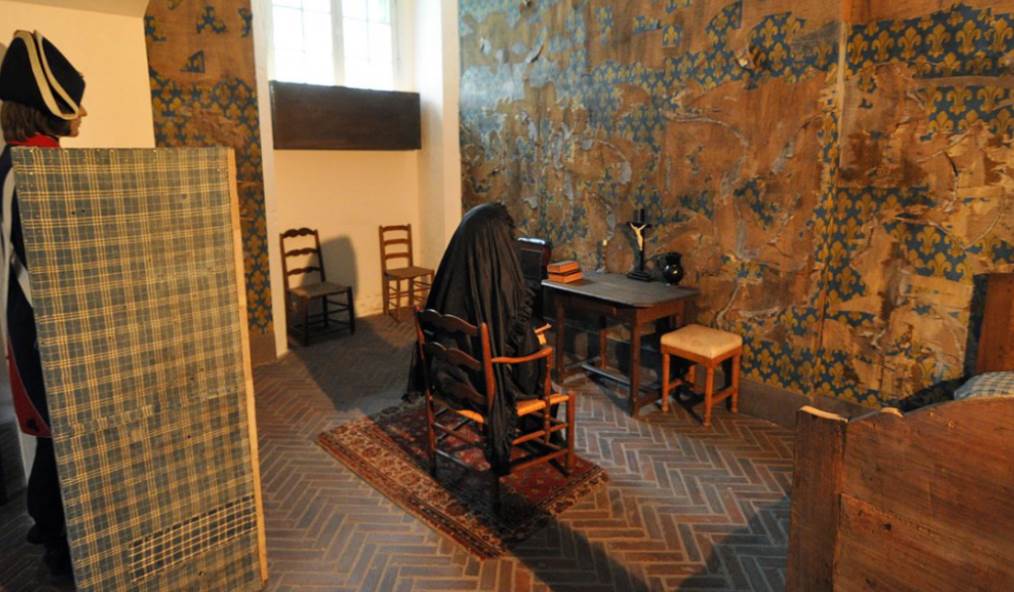
28. Marie Antoinette’s trial started
On October 14, 1793, Marie Antoinette’s trial started. Her main accusations were depleting the treasury of France and undermining the security of the state through her alliance with Austria.
She was found guilty of all charges and sentenced to death on October 16, 1793, something she and her lawmakers didn’t expect would happen.
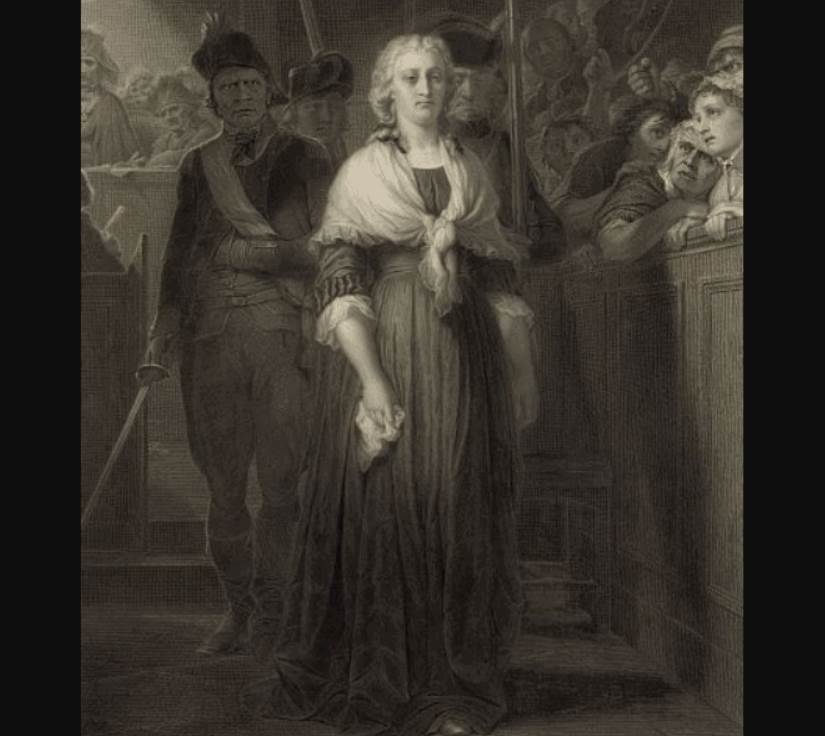
29. Marie Antoinette was executed by guillotine
The same day that she heard her sentence, she was executed as well. At 12:15 pm on October 16, 1793, she arrived at the Place de la Révolution and was executed by guillotine in front of a cheering crowd.
During the one-hour trip from her prison cell to the place of the execution, she was shouted at by the mob and remarkably held her composure. Unlike her husband who was brought there by carriage, she was driven there in an open cart.
What were her last words?
She accidentally stepped onto the foot of the man that was about to chop off her head and responded “Pardonnez-moi, monsieur. Je ne l’ai pas fait exprès” or “Pardon me, sir, I did not do it on purpose.”
Less than a minute later, it was all over…

More interesting facts about Marie Antoinette
30. Marie Antoinette loved to ride horses when she arrived at the Palace of Versailles, but it was deemed too dangerous for the soon-to-be Queen of France. She reportedly rode donkeys instead.
31. She instantly had an enemy when arriving at Versailles in the form of “Madame du Barry.” She was the mistress of Louis XV and wasn’t in favor of the French-Austrian Alliance. Shortly after Louis XVI became King of France, Louis XVI exiled Du Barry which made a lot of people, including his wife, happy.
32. The initial feud was solved when Marie Antoinette agreed to meet Madame du Barry after initially refusing to do so on New Year’s Day 1772. She only said one thing and that was “There are a lot of people at Versailles today.”
33. While she was sentenced to death for depleting the state’s treasury, she was also caring and generous towards others. In 1787 during a very problematic famine, she sold off the royal flatware to buy grain for those in need.
34. The image below was the favorite portrait of Marie Antoinette’s mother of her daughter, depicting her in hunting attire.
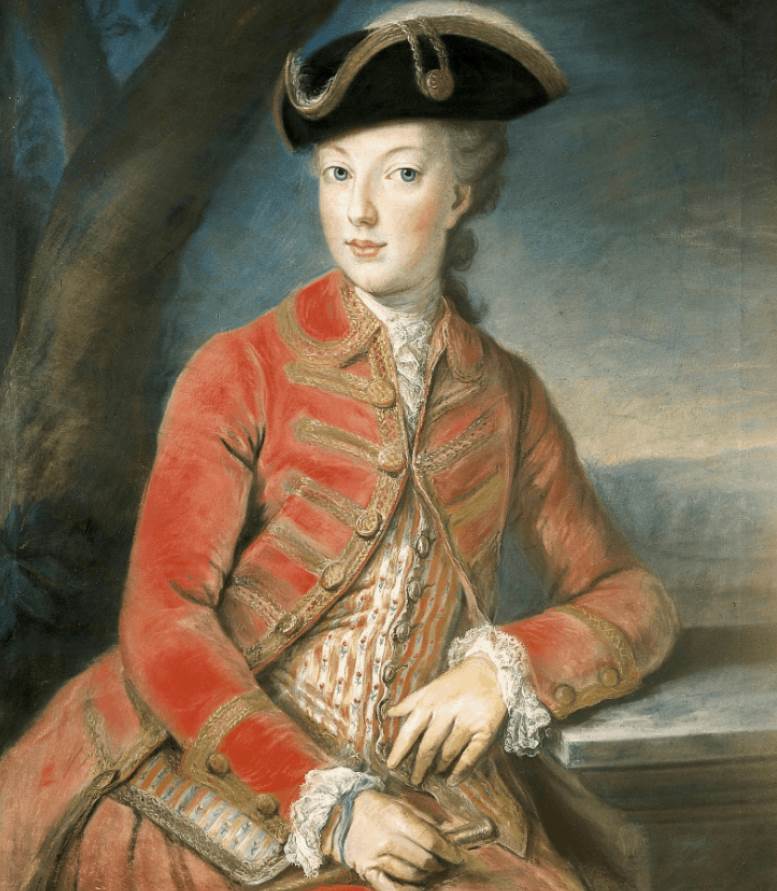
35. Marie Antoinette was really homesick when she lived at Versailles, and didn’t really like life at the court. On May 16, 1770, she left Austria at the age of 14, never to return.
36. When she left for France, she wasn’t going alone. Her entourage consisted of 57 carriages, 117 footmen, and 376 horses.
37. One of the main reasons Marie Antoinette was executed was because she depleted the treasury. The truth about the matter though is that the country was already in serious financial debt the moment they ascended the throne.
38. Even though it’s a fact that Marie Antoinette had a loyal husband who didn’t have any mistresses, this wasn’t in her favor. The slander that was usually addressed to the King’s mistresses was addressed to the queen instead. What followed were non-stop pamphlets of suggestions and exaggerated remarks.
39. The march of the women to Versailles was marked by them wearing white shirts. These were the same shirts that Marie Antoinette introduced to look more “common.” This clearly backfired and it became fuel for the revolution and eventually landed the royal family in the Tuileries Palace under house arrest.
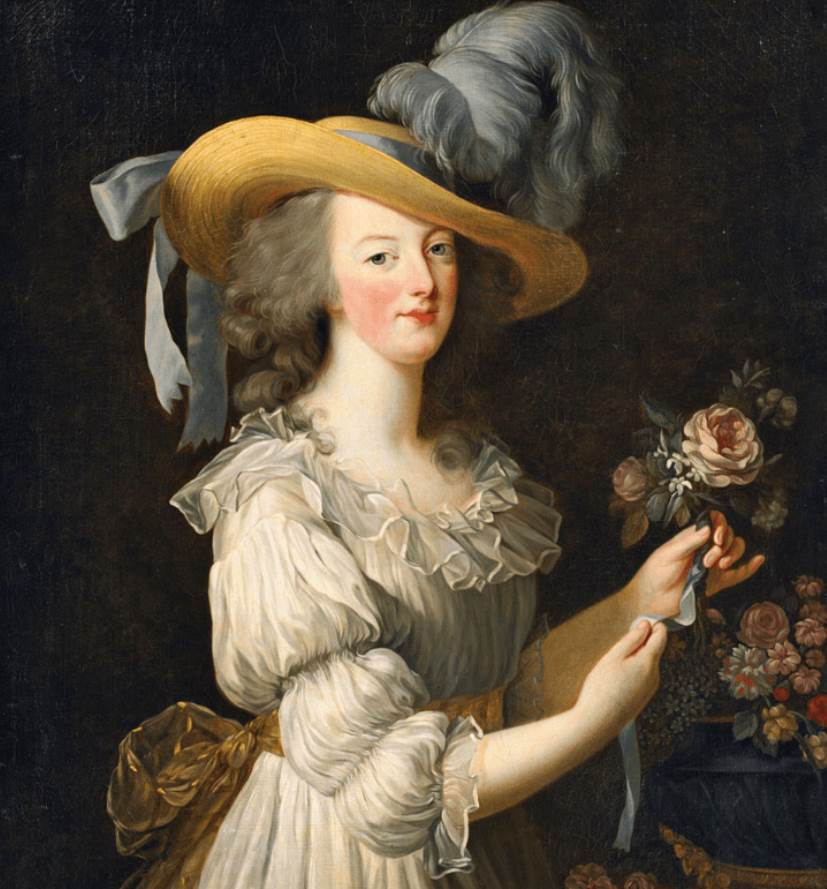
40. The introduction of a simple white shirt wasn’t the only thing Marie Antoinette introduced to the court. She also pushed for less use of heavy make-up and wearing wide-hooped panniers. Most of the time these things weren’t appreciated by the older women.
41. Marie Antoinette was an avid reader and she accumulated a vast collection of over 5,000 books during the early 1780s. Her favorite topics were music and history.
42. Some American Revolutionaries who wanted to honor France for their help in fighting the British named a town after Marie Antoinette named Marietta, Ohio.
43. The Queen had a remarkable hairdresser named Leonard Autie. He is the one responsible for creating the hairstyle full of adornments and reaching over 1 meter high (over 4 ft).
44. Marie Antoinette absolutely loved children, and during her reign, she adopted several children who became orphans.
45. She has been labeled as many things, and one of the nicknames she was given by her enemies was “Madame Veto.”
46. Madame Veto was included in one of the songs that became popular during the French Revolution called “La Carmagnole.” It’s a sarcastic song that sings about the triumphs over the monarchy of France.
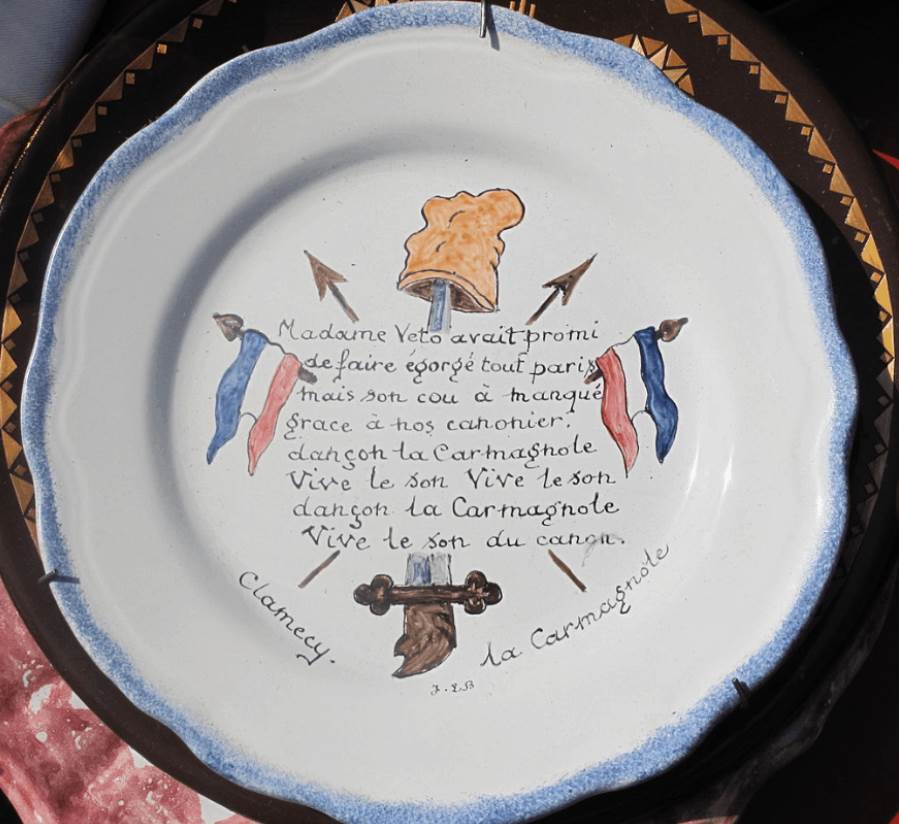
47. The famous words “Let them eat cake” when told about the people in the streets of France who were starving due to high grain prices weren’t said by Marie Antoinette. This was again a propaganda method by her opponents to mold public opinion.
48. Charges related to her sentencing included incest, amongst various other sexual deviances. When she heard the accusations, she emotionally addressed the courtroom denying these accusations. Especially the women showed sympathy for her during this moment.
49. After her execution, Marie Antoinette was buried in a common grave behind the Church of Madeline. She was however exhumed after the Bourbon restoration of 1815 together with her husband Louis XVI and given a proper burial and final resting place in the Cathedral of Saint-Denis.
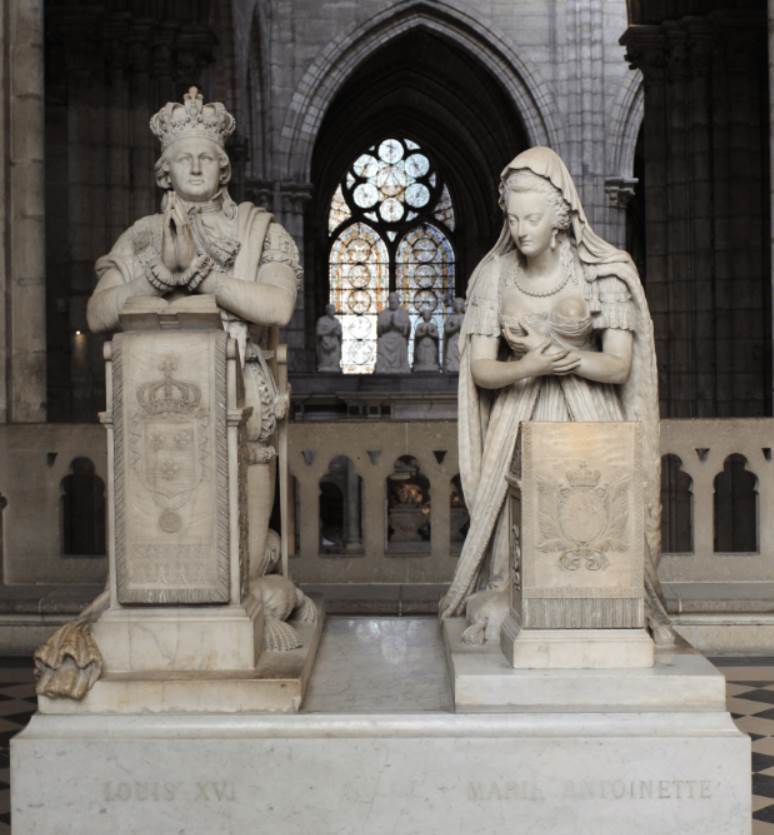
50. It wasn’t for one guard, the last Queen of France wouldn’t have been executed. The Carnation plot probably failed because the guard who stopped it found a note in her cell. She was already outside with her rescuers when she was uncovered.
51. The carnation plot is probably the main reason many people believe that the outcome of Marie Antoinette’s trial was already determined before the trial even started.
52. Marie Antoinette doesn’t just have a statue at Madame Tussauds’ wax museum, her head actually served as a model just after her execution.
Yes, that’s right, Marie Tussaud was forced to make death masks of the people she worked for at Versailles, including those of her employers King Louis XVI and Marie Antoinette!
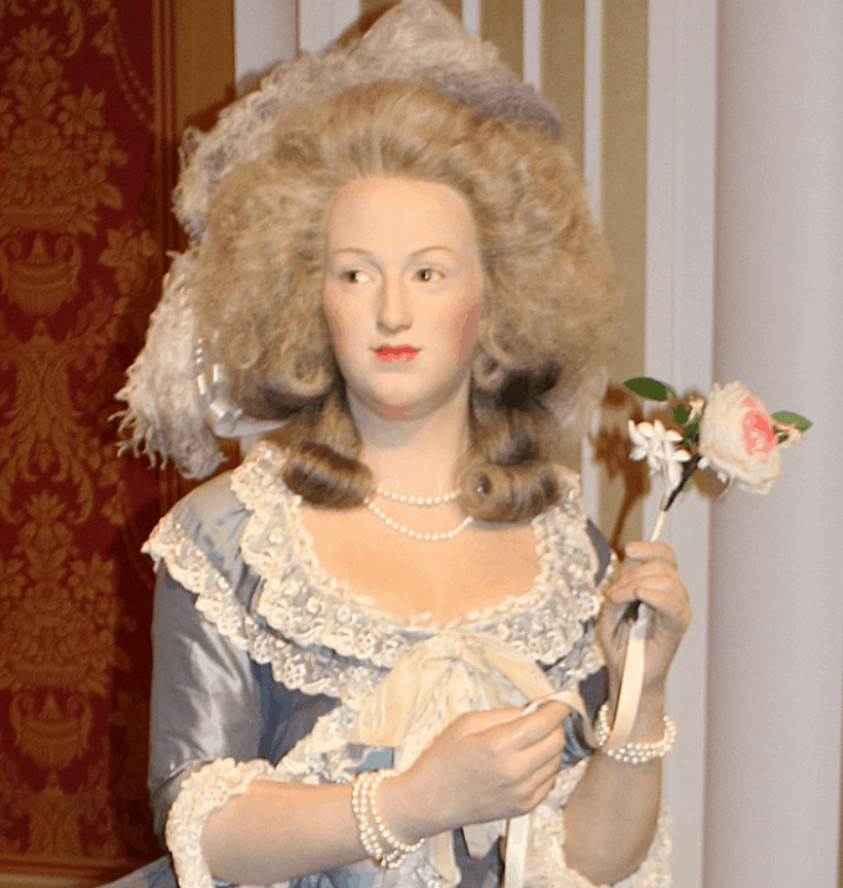



Leave a comment
You must be logged in to post a comment.